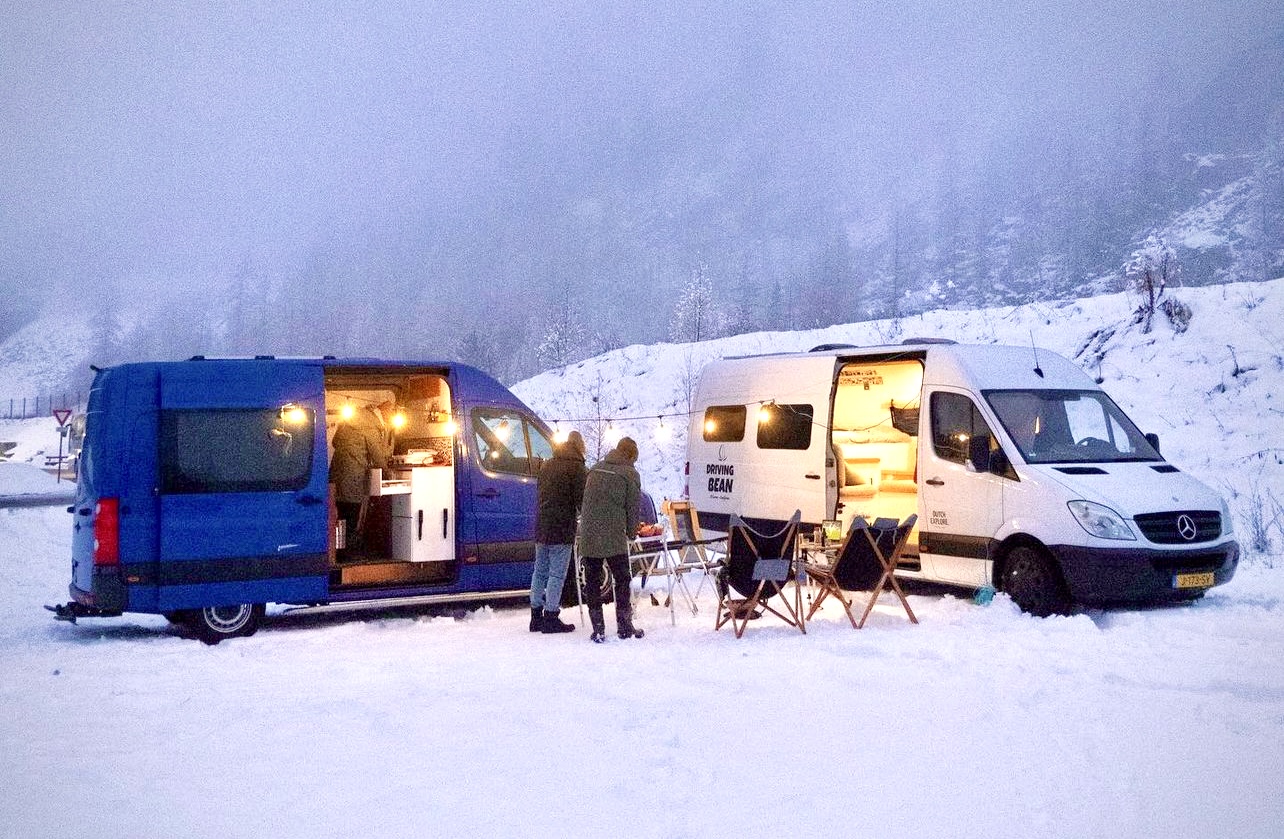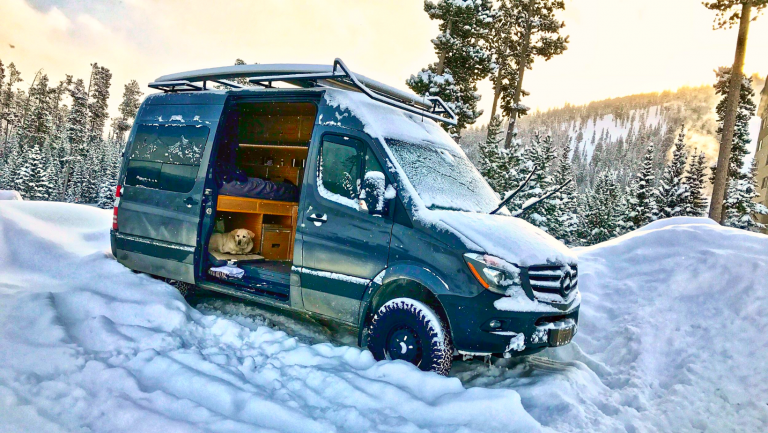Top 5 Diesel Heaters For Campers, Van Conversions & RVs 2024
For those that fantasize about living full-time in a camper van or RV, there are a lot of essential factors to consider; keeping warm during the winter should be near the top of that list.
Without a way to keep warm, traveling in an RV during the colder months would be highly uncomfortable. While extra blankets, sleeping bags, hats, and wool socks are great options for when you’re in bed, driving a van requires you to be completely mobile. And, regardless of how well-insulated your campervan conversion is, I guarantee you’ll want a heater—a dependable one, at that.
While several fuel sources can heat your camper, diesel heaters are frequently regarded as the best and most cost-effective option for van life. Diesel heaters come in two varieties: German-made heaters and Chinese-made heaters.
There is no reason to be concerned about this important task. Numerous excellent options are available, with a wide range of prices to suit any budget. It takes a lot of planning to embrace the van life; it is an investment in your future. After all, wherever you go, this van will be your new home or weekend home base.
What to look for when buying a diesel heater for a camper van
The following features and specifications must be considered when comparing diesel heaters.
Heat Output
It is crucial to avoid wasting money by purchasing an oversized or undersized diesel heater.
A diesel heater in a room that is too small will be effective. Instead, it will waste power and fuel at a higher rate than usual. In the worst case, even the highest and noisiest setting may not be enough to keep you warm.
Too large, and the preliminary investment will be too high.
Since it will only infrequently require full power, more carbon will accumulate, necessitating more frequent maintenance. Furthermore, the frequency with which the cycles occur will increase.
Aim for a size that will minimize the frequent cycling of the diesel air heater’s on and off switches, as this causes the most noise and electricity consumption.
The amount of space that needs heating will determine the optimal size.
Keep in mind that installing overhead storage can help reduce heating costs. However, the exposed driver’s cab that results from removing the bulkhead during the conversion process results in a larger area that must be heated.
Medium-sized vans would benefit from a 2 kilowatt (KW) heater. Look for 4-5KW for anything more significant.
Budget & Cost
The high-end models are expensive, especially compared to a similar Propex gas heater.
However, low-end Russian and Chinese diesel heaters are much cheaper if money is tight at this stage of your DIY campervan conversion.
The difference in cost is substantial enough that purchasing the cheaper version initially won’t make you feel like you wasted your money if you decide to upgrade in the future. However, replacements can be made quickly and easily.
Electrical Demand
Diesel heaters are not able to function without a 12v electrical supply. Therefore, they require a large amount of power during startup and shutdown but only a trickle during regular operation.
Remember that the initial startup requires a good surge of power, which is not a drawback but should be accounted for. This can reach 15 amps when warmed up from a cold start.
Only for a short time do you feel the intense draw. After that, ours drops to between three and four amps for the next five minutes.
Once it’s heated up, it uses about 1 amp/hr.
When calculating the size of your solar battery bank, account for this.
There are 12v and 24v versions of some diesel air heater brands’ products. This article only covers 12v versions of the various models mentioned.
Altitude Setting
Diesel heaters have issues once you reach about 5,600 feet in elevation.
The high-end versions can function at greater heights because they have settings that modify the air/fuel ratio.
Our Webasto had trouble operating at 16,000 feet above sea level in Bolivia, despite being equipped with a high-altitude kit.
Look for a model with a feature or extras that allow it to function at high altitudes if you plan to spend any time there.
Noise
There are better choices than a diesel air heater if you’re trying to get some shut-eye.
They’re noisiest when turned up to eleven and again when turned off.
Setting the thermostat to a reasonable level and installing an appropriately sized heater can lessen the time required to warm the van after being parked.
Premium versions are designed to produce less noise than cheaper ones.
We weathered a Patagonian winter in our Sprinter conversion, equipped with a Webasto. We left it running nonstop, and it never bothered us.
Maintenance
Carbon buildup in heaters is a common problem due to the dirty nature of diesel fuel. It is recommended to run the heater for one hour at maximum capacity once a month to avoid carbon buildup.
If this is not possible, then make sure to clean and maintain it according to the manufacturer’s instructions.
Fuel Economy
Diesel heaters, as their name implies, burn diesel, though some premium models are also available in gasoline form.
All diesel heaters have the excellent fuel economy.
You can expect to use between 0.1 and 0.5 liters per hour from them, with some being marginally more efficient than others.
Diesel heaters in campers have a meager operating cost compared to other forms of heating.
Reliability & Servicing
Webasto and Espar, two of the industry’s premier brands, have solid reputations for product durability and dependability.
At the prices they’re asking, that’s the bare minimum you should anticipate.
Europe and the Americas offer convenient locations for customers to visit service centers. Any problems with service or warranty claims will be handled promptly and professionally.
There needs to be a history or support networks for the cheaper models. Therefore, you are primarily on your own regarding guidance and maintenance.
However, the popularity of these budgeting models has resulted in the creation of a sizable Facebook group where members can share experiences and help each other overcome obstacles.
We have no qualms about seriously thinking about one for future campervan conversions because so many people are now using them without any problems.
Webasto Air Top 2000 STC

Webasto is one of the two best brands of diesel air heaters for vans, campervans, RVs, and boats, along with Espar. They make high-quality, reliable parts and have service centers and dealers all over the world, especially in Europe. Most campervans have either an STC 2000 or an Air Top Evo 40 heater.
Compared to most diesel heaters on the market, this is definitely one of the best. The Webasto STC 2000 is very efficient in how much energy it uses and how much heat it puts out. At full capacity, it can run on just 2kW and put out 7,000 BTUs of heat.
This is the smallest heater, and it works very well at high altitudes. To get the most out of this heater, you should also buy a separate controller so you can keep an eye on and change the temperature in your house on wheels. The Webasto Heater 7 Day-Timer is a good choice.
We recommend this model because it’s cheap, easy to use, and comes with a lot of extra options for accessories. This option also comes with a diagnostic kit so you can check the air quality and make sure everything is working right.
Key Features
- Heat output 0.9 – 2.0 kW (3,000 – 7,000 BTU / h)
- New split marine wiring harness with two branches to battery and cabin control.
Webasto Air Top EVO 40 4kW Diesel Air Heater

Webasto’s Air Top EVO 40 is yet another of the company’s most popular diesel heaters today. This unit can produce up to 12,000-13,650 BTUs of heating output.
However, it is also the most expensive, costing around $1,700. However, if you have the money to spend and want the most heating power output, this is unquestionably the diesel heater to buy.
Key Features
- Whisper quiet heating – now improved further with a quieter fuel dosing pump
- 24v heater – Everything you need to complete a professional installation
- The latest Webasto generation Air Top EVO 40 has even better fuel economy.
- Comprehensive installation manual
Espar Airtronic D2


Espar Airtronic M2



